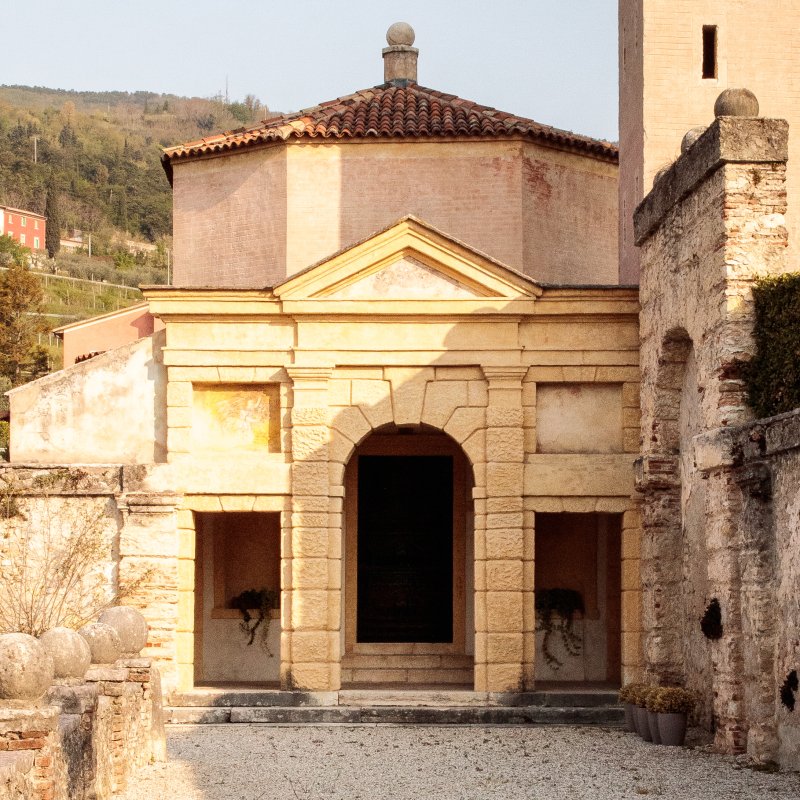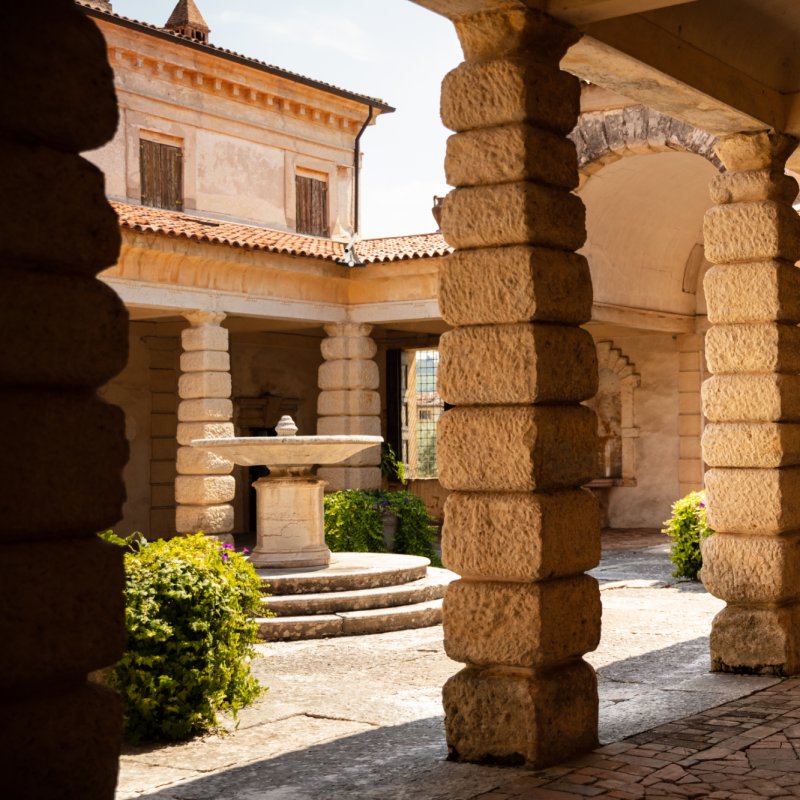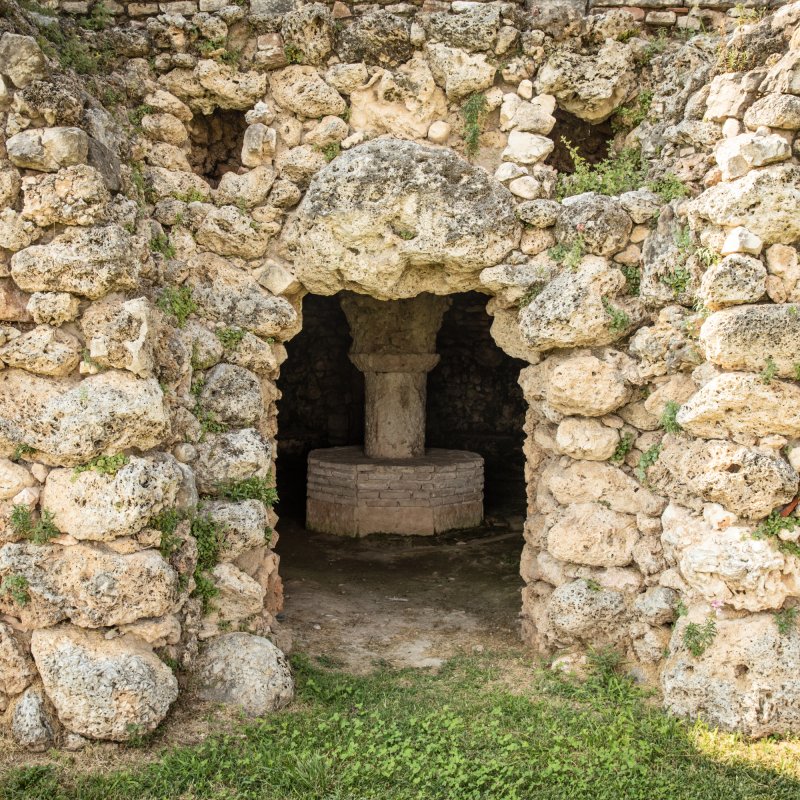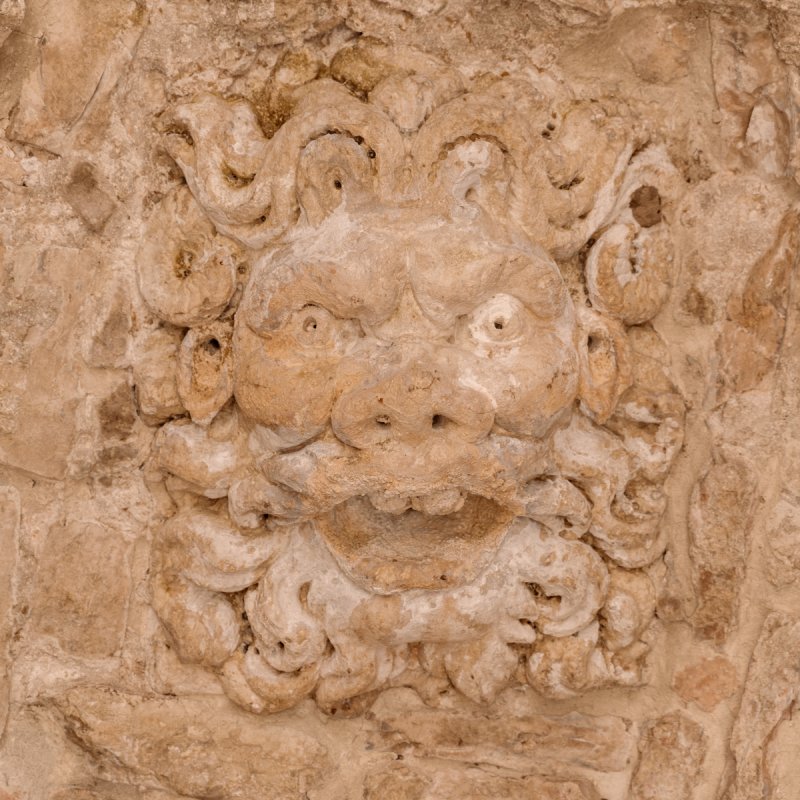Interior rooms
The juxtaposition of nature and art also continues inside the villa where the four anthropomorphic mask-like Fireplaces dominate the internal rooms. Allegories of unknown forces, they reflect a taste for the grotesque, for nature investigated in its most curious and enigmatic aspects. Initially attributed to Bartolomeo Ridolfi, art historians now attribute them to Giovan Battista Scultori, a pupil of Giulio Romano and one of his most loyal collaborators. It was essential, to address such singular and unusual themes both in the field of architectural and decorative invention, to commission Giulio Romano himself, due to his ability to amalgamate relics of the past alongside more innovative additions. In this artistic context, Giulio Romano and his collaborators were the ideal and most effective interpreters, capable of alluding, via figurative construction, to a certain type of ‘knowledge’ reserved for a select elite.
The set of four fireplaces – the Lion, the Unicorn, the Devil and the Angel – are a unique and isolated marvel in the history of architecture. Their expressive power must be sought in the multiform symbolism that pervades the entire Villa complex and in the new, strongly subversive taste for the horrid, the terrifying, the monstrous, the grotesque and the deformed, expressed so effectively by Giulio Romano, in particular in the Chamber of the Giants (Sala dei Giganti) at Palazzo Te. The huge mascaron fireplaces at Villa Della Torre and the fresco in the Chamber of the Giants at Palazzo Te thus seem to be reflections of each other. The Hall of Mirrors, the result of eighteenth-century renovation work, instead features stucco and pictorial decorations, but also preserves some bronze medallions depicting classical artists and poets. These works, by Giulio Della Torre, the then owner of the Villa, together with a bust of an imperator, a female effigy, a Satyr and a depiction of Mercury placed on the architrave of the doors, are examples of the continuous throwback to classical culture. In the Peristyle, and throughout Villa Della Torre, internal rooms included, the classic and the modern, the courtly and the grotesque, collaborate with the intention to stun and amaze guests.









